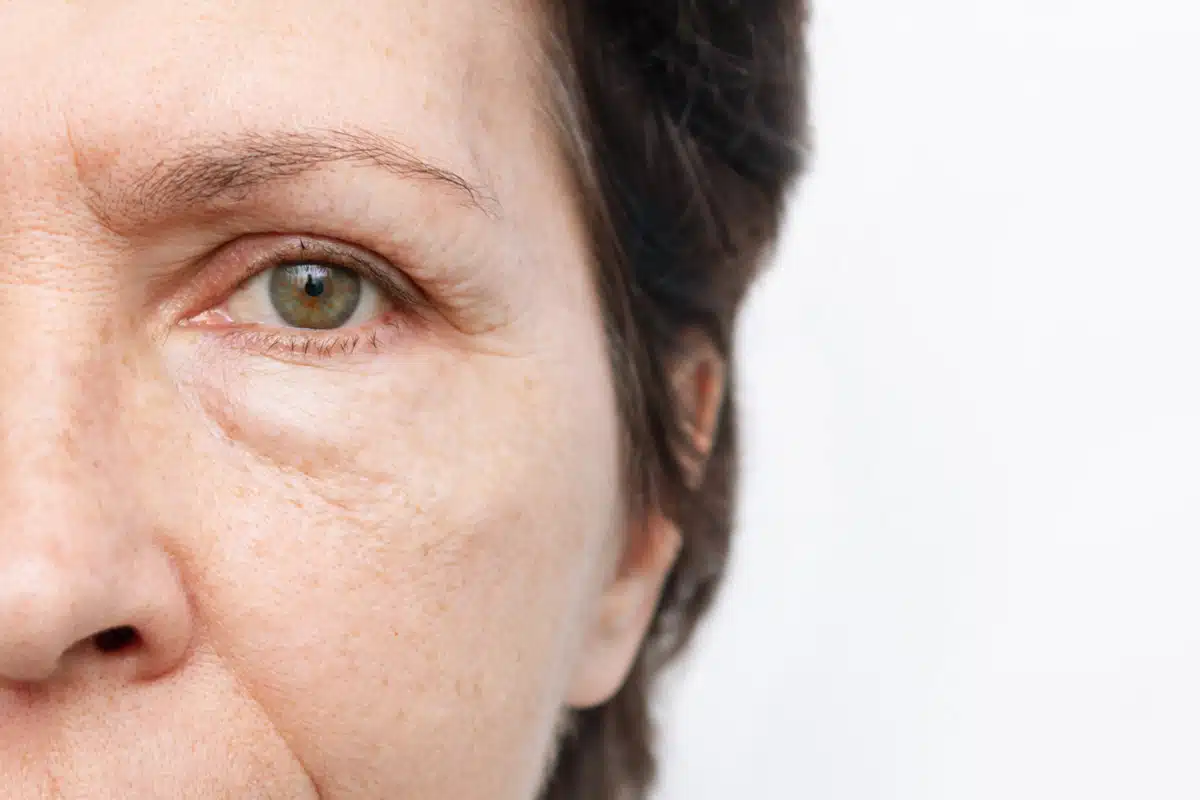Blepharoplasty, commonly referred to as eyelid surgery, is a specialized procedure to enhance the appearance of the eyes. Understanding how long the surgery takes can help patients prepare for the experience. Dr. Andres Bustillo applies his extensive expertise to offer insights into the expected duration of the surgery, from initial consultation through to the recovery process.
The impact of different blepharoplasty techniques on the length of the operation is varied, which is why accurate scheduling and thoughtful recovery planning are essential. By addressing common questions on surgery timing, Dr. Bustillo provides patients with a comprehensive understanding, ensuring they are well-informed and confident in their surgical decisions.

The Duration of Blepharoplasty Surgery Explained
Duration of Eyelid Surgery
Blepharoplasty, aimed at correcting droopy eyelids and enhancing vision, typically takes one to three hours. This varies depending on the extent of the work – with either upper eyelids, lower eyelids, or both being treated. Combining this procedure with additional treatments may increase the time.
Influences on Surgery Time
The length of a blepharoplasty procedure can differ due to several factors:
- Patient’s Anatomy: Individual needs may require tailored techniques that could extend surgery time.
- Anesthesia Type: The choice between local with sedation or general anesthesia can impact both surgery and recovery durations.
- Patient Health: The presence of certain health conditions and the body’s reaction to medications and vitamins must be considered, as they can alter surgical timing and results.
- Care Requirements: Although not affecting the surgery time directly, thorough pre-surgery consultation and proper post-operative care are essential for a successful outcome.
Patients should adhere to provided instructions regarding medications and vitamins to promote a more efficient surgery and recovery. Good preparation and aftercare are crucial for a smooth procedure.
Blepharoplasty Procedure Timeline: Consultation to Recovery
Consultation and Preparations Before Surgery
Patients considering blepharoplasty start with a consultation to explore their objectives and undergo a detailed examination as well as a review of their medical history. The surgeon evaluates the upper eyelids, including skin quality and fat deposits, to ensure the surgery will improve the patient’s vision and eyelid function. During preparation, patients receive specific instructions, such as:
- Ceasing certain medications that contain blood thinners
- Arranging transportation after surgery
- Fasting guidelines before the surgery
The Surgical Process
On the day of the surgery, anesthesia is administered for comfort. The surgeon then carefully removes excess upper eyelid skin and fat, focusing on enhancing appearance while maintaining natural functionality. The process includes:
- Marking the upper eyelids to indicate tissue removal areas
- Incisions along the natural crease of the eyelids
- Removing tissue with precision
- Suturing to reduce scarring
After the cosmetic procedure, patients are given post-operative care instructions to facilitate the recovery process, emphasizing proper healing practices.
Blepharoplasty Techniques and Surgery Time
Blepharoplasty is a surgical procedure aimed at enhancing the eyelid’s appearance. The time required for surgery may vary depending on whether the patient chooses upper, lower, or combined eyelid surgery. The upper blepharoplasty typically involves the removal of saggy skin from the upper eyelids and is generally quicker. In contrast, lower eyelid work that deals with bags or wrinkles is more complex. Combined surgery for both eyelids certainly requires more time due to the increased complexity.
Surgery time is also affected by the simplicity or intricacy of the work being done. For instance, a minor alteration, such as the removal of a small amount of upper eyelid skin that may restore sight or rejuvenate the eye, takes less time. However, reconstructive work to fix issues from aging, genetics, or injury calls for more detailed effort, thus extending the surgery time. Eyelid alterations range from making small incisions for straightforward improvements to extensive ones for significant facial procedures, influencing the overall duration of the operation.
In a nutshell:
- Upper Blepharoplasty: Typically faster, involves removing excess upper eyelid skin.
- Lower Blepharoplasty: More detailed, addresses wrinkles or bags.
- Combined Surgeries: Longer duration, deals with upper and lower eyelids together.
The specific technique impacts the time spent in surgery, striving to balance patient goals with the realistic requirements of the operating room.
Scheduling and Recovery Planning for Blepharoplasty
Patients preparing for an eyelid surgery need to plan for downtime. Typically, several days away from work are necessary for the initial phase of healing. During this phase, it’s common to notice swelling and bruising. Patients must have plenty of rest, ideally with their head in an elevated position, and use cold compresses to manage swelling. Adherence to the surgeon’s instructions is important, especially when it comes to rest and limiting strenuous activities and screen time.
To aid in recovery, steer clear of certain medications and vitamins that could potentially increase bleeding, such as aspirin or vitamin E, for a duration advised by your healthcare provider both before and following the procedure. Arranging for assistance after surgery is advisable, particularly if your job involves exertion.
Following the instructions provided by your surgeon is critical; they will help determine when you can start wearing makeup again and when to reintegrate exercise into your routine. As the eyelids continue to heal and excess skin and associated swelling reduce, the revitalized look of the eyelids becomes evident.
Recovery timeline
- 2-3 days post-procedure: Expect tightness in the eyes and possible blurriness.
- 5-7 days: Many patients feel ready for work and social activities.
- Several weeks: Swelling lessens, energy levels improve, and normal activities can be resumed.
- Several months: The outcome is visible as the healing completes and any cosmetic surgery scars diminish.
Recovery periods vary among individuals. It’s vital to have ongoing conversations with your doctor for personalized guidance.
Answering Your Blepharoplasty Timing Questions
Combining Blepharoplasty With Additional Surgeries
Blepharoplasty can be done with other procedures to improve a patient’s appearance. For instance, an eyebrow lift not only corrects sagging brows but also enhances the results of eyelid surgery. Patients achieve a more cohesive improvement of the eye area. It’s crucial to converse with your surgeon about any additional operations to address excess skin for a more youthful appearance.
Selecting a Surgeon for Eyelid Surgery
When choosing a plastic surgeon for eyelid surgery, prioritize one who is board-certified and has experience with eye procedures. Your surgeon should offer clear instructions before, during, and after the surgery, attentive to the required medications. A proficient surgeon is key to achieving a safe procedure, with well-managed expectations and results that align with your vision for your eyelids and eyebrows.
Patients should ensure that their chosen professional can guide them through the particulars of the eyelid procedure.
Blepharoplasty Surgery Timing
When to Consider Surgery
Planning for blepharoplasty involves understanding when surgery may be beneficial. It’s essential to evaluate the eyelid’s appearance and function. Conditions such as excess skin, which could interfere with your vision or alter your eyebrow position, may signal the need for the procedure.
Tailoring Your Plan with Expert Advice
Receiving guidance from a specialist is crucial for a procedure suited to your unique facial structure, including the eyebrow shape and position. During a consultation, a specialist assesses several factors to determine the right time for surgery:
- Impact of excess skin on appearance and vision.
- Eyebrow symmetry and support.
- Medical conditions and overall readiness.
These evaluations help patients prepare properly for blepharoplasty, ensuring personalized care.
Consult with an Experienced Surgeon
Understanding the time involved in blepharoplasty surgery is crucial for setting realistic expectations and making an informed decision. If you have questions or need tailored advice, we encourage you to seek the guidance of a professional. Scheduling a consultation with Dr. Bustillo can provide you with a detailed understanding of what to expect, considering your circumstances and the specific techniques that might be best for you.
Your journey toward rejuvenating your eyelids begins with expert advice. Dr. Bustillo’s extensive experience in facial plastic surgery ensures that you will receive comprehensive information, allowing for well-informed choices about your procedure. Contact us to arrange your consultation and take the first step towards planning your blepharoplasty with confidence.



